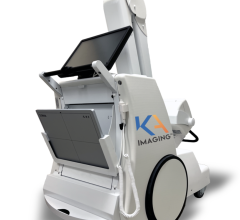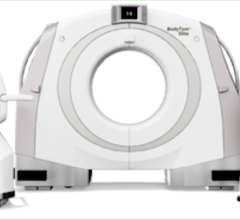
With PatientKeeper software, physicians can access complete patient medical records via their PDAs.
For most of us, handheld devices put the “fun” in functional. In the medical world, these tools do much more — they help save lives.
Medical professionals are increasingly demanding mobile access to vital patient information. For busy physicians the benefits of handheld devices, such as PDAs, extend beyond the convenience of appointment scheduling and Internet access. Clinical software programs that provide information on drug interactions, disease reference and patient tracking, along with devices that can display clinical images, are fast becoming indispensable tools at the point of care and beyond. For today’s technically savvy clinicians, PDAs in the pocket are becoming as commonplace as the stethoscope around the neck.
Digital Doctoring
Electronic solutions can bring every aspect of the patient’s electronic medical record (EMR) into the palm of his or her physician’s hand.
“One can now obtain any of the relevant data — some of it may even be critical information — about a patient essentially on the drive in to the hospital,” Darrick Nelson, M.D., explained. As a result, physicians can head straight to the patient’s bedside without having to take intermediary steps to track down missing information.
Dr. Nelson is an assistant professor and staff physician at CHRISTUS Spohn Hospital, Corpus Christi, TX. CHRISTUS physicians have been using the PatientKeeper Inc. enterprise system for about three years. The mobile applications integrate with the hospital's existing information systems and make it easy for doctors to access up-to-date patient information with their mobile devices when and where information is needed.
These solutions not only allow easy access to critical information at the point of care, Dr. Nelson says, but they also serve as education tools.
“I teach at a residency program and I buy them their handhelds so they get automatic access to these applications,” he said. For instance, he explains, a resident can be in the PatientKeeper on a particular patient, highlight a diagnosis and then click over to the reference library without ever leaving the original application’s framework.
The system’s ease of use is also of key importance, according to Dr. Nelson.
“It takes me about 10 minutes to train a new physician to use the PatientKeeper application,” he said. “Simplicity and fewest numbers of clicks are always better for the physician.”
Code Blue
Signaling serious cardiopulmonary emergencies, code events send hospital personnel scurrying to a patient’s bedside with the potentially life-saving crash cart in tow. But for clinicians responsible for documenting the code, the most important tool may simply reside inside their own pocket.
A growing number of facilities are adopting electronic systems for capturing and analyzing code event data in an attempt to prevent cardiac arrest and improve survival rates. Three months ago, when the Carl Hayden VA Medical Center in Phoenix, AZ, decided to replace their outdated data collection system, they chose Zoll Medical’s CodeNet system.
“The easy-to-use PDA system requires minimal training,” explained Clement Singarajah, M.D., FCCP, FABHP, the medical center’s ICU director.
Although there was some resistance to the change at first, he says, the entire staff was very comfortable with the system within two months. And for the approximately six individuals — clinical pharmacists and nursing supervisors — who actually record the codes, the learning curve was even shorter.
When installed on a pocket PC-based PDA, CodeNet Writer allows clinicians to log code events, including patient assessment, interventions and outcomes directly as they occur. Defibrillator data can be downloaded using a serial cable or a Bluetooth wireless connection to the defibrillator device. Together this information provides clinicians with a complete and accurate timeline of cardiac events, which can then be downloaded to the CodeNet Central application and stored in an integrated database.
Thanks to the system, Hayden VAMC is now documenting code events with better accuracy and fewer errors, says Dr. Singarajah. CodeNet allows them to generate single and aggregate reports and serves as a learning tool by allowing clinicians to review and identify problems with individual codes. It also aids in the preparation of data reports for submission to the Joint Commission on Accreditation of Healthcare Organizations (JCAHO), and automatically sends the facility’s data to the National Registry of Cardiopulmonary Resuscitation database for validation and benchmarking.
Documenting codes in a bustling emergency department can be especially challenging and requires a solution that caters to the unique needs of ED staff.
With MedQuist’s DocQment Code ED Plus automated system, patient demographic data can be conveniently accessed from the hospital’s registration system to expedite the coding process. The Web-based electronic signature feature ensures reports are sent to the appropriate information systems as well as the EMR. Facilities can also add transcription software with integrated speech recognition capabilities and outsourcing editing services.
“DocQment Code ED Plus is an innovative solution that helps EDs work faster, provide better patient care and reduce costs,” said Scott Bennett, Medquist’s senior vice president of Sales and Marketing. “It also allows a busy ED staff to easily document the electronic notes they need to populate the facility’s EMR in order to expedite their billing.”
Lending a Helping Hand
Technical innovations leading to earlier prevention, detection and treatment of clinically significant events are key to advancing healthcare and keeping associated costs under control. Handheld solutions allow physicians and other caregivers to combine their skills with sophisticated, high-tech tools to achieve the ultimate in streamlined care, better patient outcomes and a healthier hospital bottom line.







 November 26, 2025
November 26, 2025 









